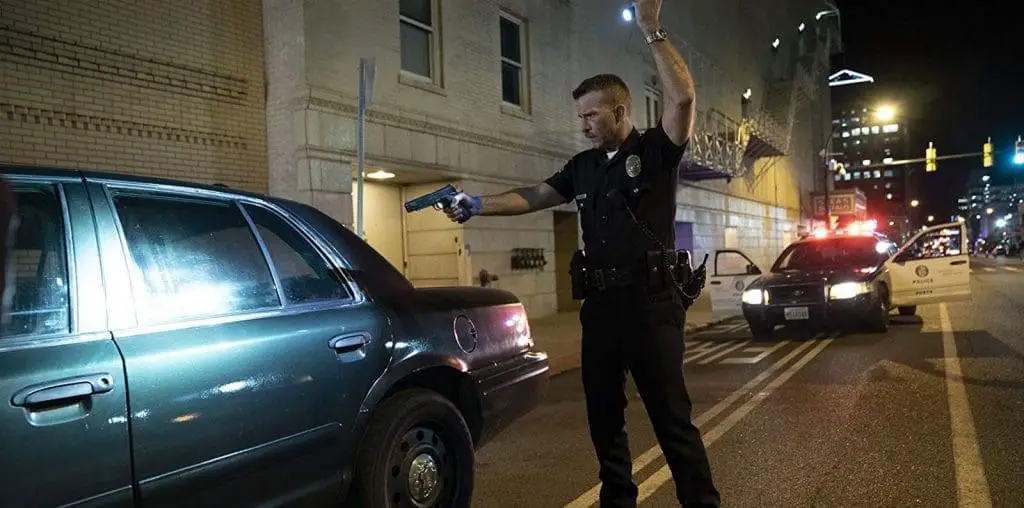
With “The Joy of Life”, Jenni Olson, film archivist, programmer and the author of The Ultimate Guide to Lesbian & Gay Film and Video, brings us a San Francisco tale dealing with indifference, loneliness and suicide. “The Joy of Life” follows the soul searching wanderings and musings of a butch d**e as she deals with the death of a friend, which goes into detail about how the Golden Gate Bridge is the number one suicide landmark in the world.
So where’s the joy come in, you ask? Well, part of it has to do with Jenni’s love for cinematic landscapes and the abundance they are supplied in here in this film. The rest, you’ll have the find out for yourself.
We spoke to Jenni Olson just days before her big premiere at the 2005 Sundance Film Festival.
What brought about the making of “The Joy of Life”? ^ My favorite style of filmmaking is landscape shots with voiceover (William Jones’s “Massilon” and James Benning’s “El Valley Centro” are two great examples of this). I used to walk around the city looking at various street scenes and constantly saying, “Wow, what a great shot!” And I was simultaneously writing a manuscript called “F**k Diary” about the adventures of a butch d**e in San Francisco. I expanded the manuscript (and changed the title) and spent time thinking about how I could put the two elements together. I always wanted to make movies but decided very early on that I didn’t want to have any actors or actual dialogue scenes. So, that’s how I arrived at landscape filmmaking as my chosen genre. I also very much wanted to incorporate archival audio and poetry. I was very fortunate that Lawrence Ferlinghetti agreed to let me use his reading of “The Changing Light” which was from a performance some years back; and also had the brilliant good fortune to get rights clearance on the Weldon Kees piano piece, “Coastline Rag” for the opening and closing titles. Kees was an amazing writer and artist in San Francisco in the 1950s whose car was found on the Golden Gate Bridge back in 1955 (he was presumed to have committed suicide).
I think it’s really cool you shot your first feature on 16mm. Why this format instead of, say, digital video? ^ Interesting you should ask this question. It is 4 days until my world premiere and I have abandoned the idea of getting an actual 16mm exhibition print at this point due to the inability of the lab to get me a properly color timed print. I had never imagined this would happen but I am finishing on HD and am very excited at the prospect of having the film look how I want it to look and also being able to use my beautiful stereo sound mix. I shot on 16mm because it was all wide landscape shots and I felt it needed to be shot on film to get the look I wanted. I’m very glad I shot on film and it will look a million times better than if I’d shot on DV. It’s the best of both worlds at this point.
Did you run into any problems shooting on or around the Golden Gate Bridge? ^ No, it all went very smoothly. We only did two shoots and got great footage. Most of the Bridge shooting was towards the end of my process so I had a clear idea of exactly what I needed.
Why is it, do you think, that the Bridge District Board of Directors refuse to put up a suicide barrier? Are they afraid that it would be too much of a cosmetic change or are they proud that the Golden Gate is the number one suicide landmark in the world? ^ They are certainly not proud of that distinction. They have made many efforts towards solving the problem (with what they call “non-physical” barriers such as bridge patrols and emergency phones). There are many issues to be resolved before the erection of a physical barrier (aesthetics are a primary concern, since it is such a spectacular landmark) and historically their has been a lack of consensus in favor of a barrier amongst the citizens and governments of the Bay Area. The momentum is rising though and I believe a barrier will be erected sometime in the next 20 years. It will be a very long and complicated process, hopefully the Bridge District will follow the example of Toronto where they held a design competition to arrive at a satisfactory design.
What was the biggest lesson you learned from making this film? ^ I learned so many things. Uppermost in my mind is the lesson that whatever can go wrong will. And that post-production is the most challenging part of the filmmaking process. I’ve had to go through so much technical crap, I feel like I’ve made the film several times at this point.
Are you doing any special promotions for the film while in Park City? ^ Just handing out postcards and being the friendly filmmaker telling people about my project (and trying to get press coverage). Have gotten lots of calls from bigshots in Hollywood but it’s not that kind of movie. I think it’s a really tremendous film — innovative and bold. I hope to get a small distributor and look forward to lots of festivals, cinematheques and museum screenings with small but appreciative audiences.
What’s up next for you? ^ I have a few things on deck. Am in development on a historical documentary about small towns in California utilizing landscape cinematography, oral histories and archival audio. It’s called “Eureka!” and will hopefully be easier to get funding for than my hybrid experimental narrative documentary (“The Joy of Life”).
